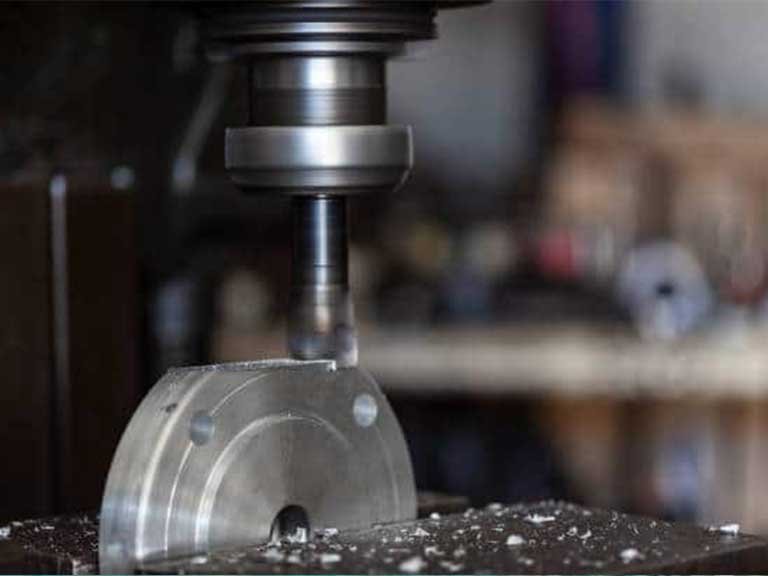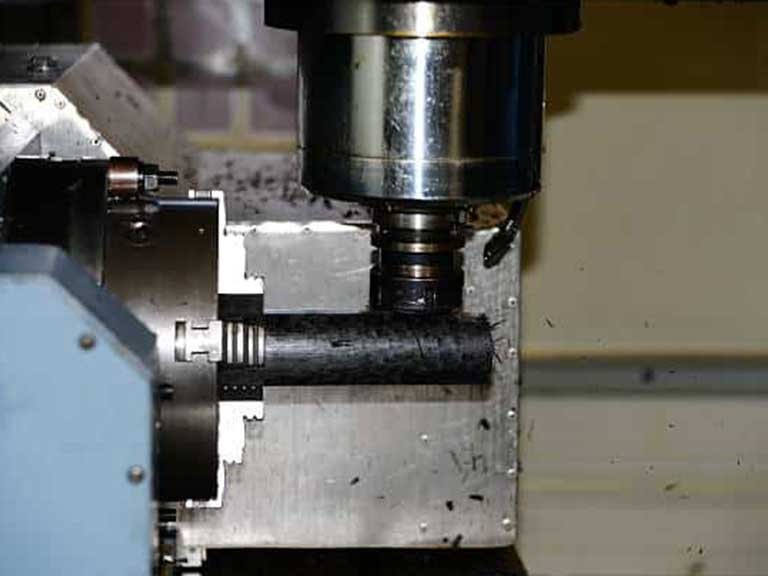Have you ever thought about how such precise and accurate parts can be made from complicated parts? The answer comes in Computer Numerical Control (CNC) machining, a very useful technology. CNC machining is an automated process that uses computer software to operate machine tools. As a result, it can precisely remove material from a workpiece to achieve the desired shape.
This technology has changed the way things are made, making it possible to make complicated parts with little help from people. Next, let’s take a look at the CNC machining workflow.
Table of Contents
Understanding CNC Machining: The Fundamentals
CNC machining is an automated manufacturing process. It uses computer-controlled machines to remove material from a workpiece to produce the desired part or component. Because it uses computer numerical control (CNC) technology, it is extremely accurate and highly repeatable. Therefore, this process is completely different from other traditional processing methods.
Using CNC machining, companies can manufacture complex parts with many small features. This can meet the strict requirements of many industries.
- CNC machining is very accurate, so it can be used to make shapes with complicated shapes.
- It’s repeatable, so parts are the same from one production run to the next.
- The process is automatic, which cuts down on the need for human input and boosts speed.
Ready to get started on your next project? Get a personalized estimate for your parts machining needs.
The Core Components of CNC Machining Systems
Three main parts that work together perfectly make up the core of all CNC machining operations. CNC machining is known for its accuracy, speed, and dependability. These parts are very important to those qualities.
Computer Control Systems: In CNC machining, computer control tools do all the work. We depend on these systems to read the programming instructions and turn them into accurate moves for the machines. The control unit’s job is to carry out the directions written in the CNC program. This makes sure that the machining process is done correctly and consistently.
Machine Tools and Hardware: Different machine tools and metal parts make CNC machining possible in the real world. Spindles, tool changes, workholding devices, and motion control systems are some of these. They are all very important to the cutting process. It is important for machines to be rigid, accurate, and calibrated so that the results are the same from one production run to the next. To get the precision and surface finish you want, you must make sure that your machine tools are well taken care of and adjusted.
Software and Programming Elements: Software parts are very important for CNC machining. This is because they make it possible to make digital models and toolpaths. Computer-Aided Design (CAD) tools help us make 2D and 3D models of the parts that need to be made. After these models are saved, CAM (Computer-Aided Manufacturing) software makes the toolpaths. Post-processors take the output from CAM and turn it into machine-specific G-code that the CNC controller can understand and run. This makes the real machining process easier.
Computer control systems, machine tools, and gear, as well as software and code, must all work together for CNC machining to be successful. This smooth contact is for making sure that high-quality finished parts are made.

The CNC Machining Work Process Explained
It is important to understand how CNC machining works in order to make useful parts. To give you a full picture of how CNC machining works. And we will break the process down into its four most important steps.
Stage 1: Creating the CAD Model
A 2D or 3D model of the end design must be made before CNC machining can start. CAD (Computer-Aided Design) software was used to make this model. This software lets engineers make accurate digital models that are used as a guide for making the final part.
The CAD model is an important part of CNC machining. This is because it gives the manufacturer all the information they need to make the part.
Stage 2: Converting CAD to CNC Programming
There is no way for a CNC machine to directly understand CAD language. So, the CAD model needs to be changed into a file that the CNC can read, usually in G-code format. This modification can be done manually or using CAM (computer-aided manufacturing) software. CAM software creates the CNC code language required for machine operation. This step is very important for turning the plan into directions that the CNC machine can follow.
Stage 3: Machine Setup and Configuration
The CNC machine needs to be set up properly before it can start making things. Getting ready for this requires a number of steps, such as fixing the item in place, choosing the right tools, and setting zero points. Making sure the workpiece is in the right place on the machine is very important for accurate machining. The CAD model and CNC code tell the person how to set up the machine, and they have to do it.
Stage 4: Execution of Machining Operations
After the setup step is done, the machine can start to work. The display screen of the CNC machine shows the CNC program. When the program is running, the machine cuts the material and manufactures the required parts according to the programmed instructions. The CNC machine will keep working until the program is finished or the user stops it by hand. To make sure that the final finished part meets the design requirements and quality standards, this step needs to be carefully controlled and watched.
By understanding these four steps, manufacturers can improve their CNC machining methods. This ensures that the finished product is highly accurate and of high quality. From the first idea to the finished product, every step in the machining process is very important.
- Creating a precise CAD model is the foundation of the CNC machining process.
- Converting the CAD model to a CNC programming language is essential for machine operation.
- Proper machine setup and configuration are critical for accurate machining.
- The execution of machining operations requires careful monitoring to ensure quality.

Essential CNC Machining Terminology
To get around in the complicated world of CNC machining, you need to know its special words. Simply understanding these terms is not enough. You also need to be able to use them to express yourself clearly. This can make the manufacturing process run more smoothly.
CAD and CAM Software Explained: CAD software is used to make computer models of the parts that need to be made in either 2D or 3D. This digital representation forms the basis of the CNC machining process. On the other hand, computer-aided manufacturing (CAM) software converts these design models into tool paths and machine instructions that CNC machine tools can understand.
G-code and M-code: G-code is the primary programming language used to control the movement of the X, Y, and Z axes on CNC machine tools. The machine tools’ movements and positions are set by the G-code orders, which are strings of letters and numbers. M codes (miscellaneous codes) control non-cutting operations of CNC machine tools. Examples include coolant flow, tool change, and program stop.
Other Important Technical Terms: Some other important names in CNC machining are Manufacturing Data Collection (MDC) software and Distributed Numerical Control (DNC). CNC software lets multiple machine tools connect to a central server. MDC software gathers real-time data from machines and workers. To get the most out of CNC methods, you need to understand these and other machining factors.
Mastering these essential CNC machining terms enables professionals to communicate effectively and optimize their machining processes, leading to improved efficiency and productivity.
| Term | Description |
| CAD | Computer-Aided Design software for creating 2D or 3D digital models. |
| CAM | Computer-Aided Manufacturing software for translating designs into machine instructions. |
| G-code | Programming language controls CNC machine movements. |
| M-code | Miscellaneous code controlling non-cutting machine actions. |
| DNC | Distributed Numerical Control for connecting multiple machines to a central server. |
| MDC | Manufacturing Data Collection software for real-time data collection. |

Conclusion
CNC machining is now an important part of modern industry. This is because it can make complicated parts very accurately. We recommend that you consider using CNC machining to meet your production needs. It combines quality, speed, and cost-effectiveness.
Yonglihao Machinery specializes in providing comprehensive CNC services. We leverage our extensive metalworking expertise to meet a wide range of industrial needs. Our team of experts is capable of manufacturing complex parts and handling various materials. This ensures that you achieve the desired machining results.
FAQ
What is the typical tolerance range for CNC machining?
The range of tolerances for CNC machining is different for each material and method. However, it’s usually between ±0.001 inches and ±0.005 inches.
Can CNC machines process multiple materials simultaneously?
Some more advanced CNC machine tools can process multiple materials or perform multiple tasks simultaneously. However, in most cases, in order to maintain cleanliness and precision in processing, only one material is processed at a time.
How does computer-aided design (CAD) software integrate with CNC machining?
A computer picture of the part that needs to be machined is made with CAD software. Computer-aided manufacturing (CAM) software is then used to turn this model into a CNC program. This program makes the G-code and M-code directions that the CNC machine follows.
What are the benefits of using CNC machining for production?
CNC machining has many benefits, such as the ability to make complicated shapes and work with a lot of different materials. It is also very accurate, consistent, and efficient.
How do I choose the right CNC machining process for my project?
You can choose a CNC machining method based on the part’s complexity, the material being used, and the level of accuracy you want. Talking to an expert in CNC machining can help you figure out which method will work best for your needs.
What is the role of G-code in CNC machining?
G-code is a computer language that tells CNC tools what tasks they need to do. It tells the machine what moves, speeds, and other settings it needs to make the part it wants.
Can CNC machines be used for both prototyping and production?
A CNC machine can be used for both testing and production, so yes, they are flexible. They give you the freedom to make both small amounts or one-of-a-kind parts as well as large production runs.

